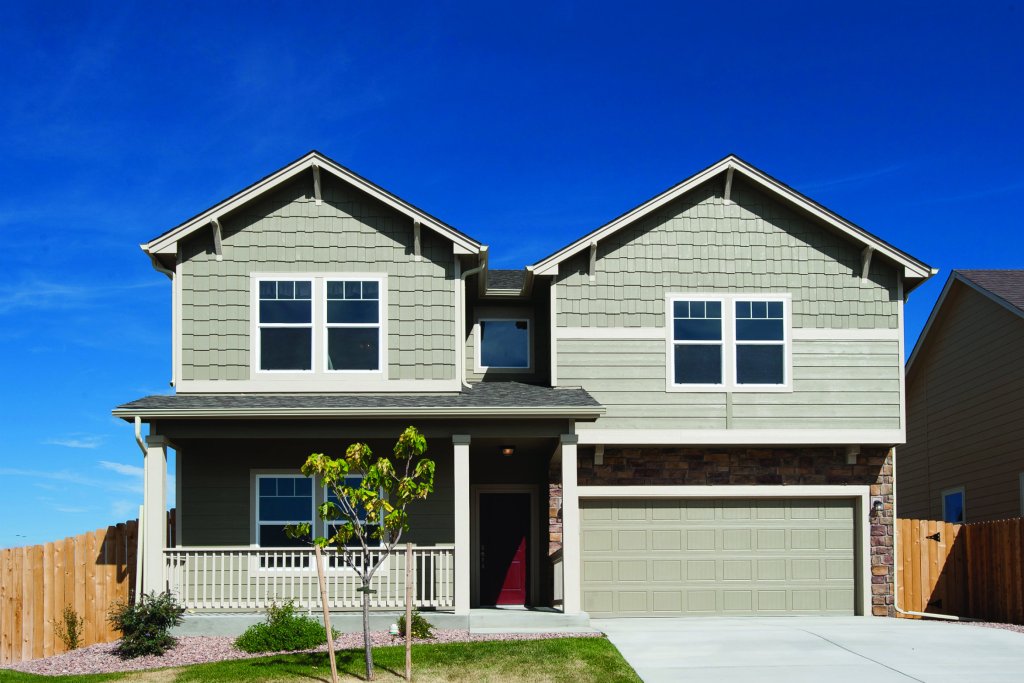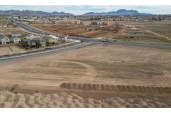Since the start of his career at Indianapolis-based CP Morgan, Todd Anderson has built homes for the entry-level market. He developed a great deal of pride in providing an affordable dwelling to meet the most basic needs for people without great means. “Something that’s near and dear to my heart is trying to keep housing affordable,” he says.
As a result, it wasn’t a surprise that the entry-level market was at the core of his strategy when he went to work for Challenger Homes in 2007. In 2008, the company bought some distressed lots from a developer. But over the past couple of years, the Challenger team is finding it harder and harder to hit that price point. “Even if you have a heart for it, it almost feels like you’re being forced out of the [entry-level] segment,” Anderson says.
Rising land, entitlement, materials, and labor costs have made it hard to build a home that the debt-strapped, savings-poor entry-level buyer can afford. Though there have been glimmers of hope—most notably the reported success of Fort Worth, Texas–based D.R. Horton’s entry-level Express Homes and the continued growth of The Woodlands, Texas–based LGI Homes—many builders have found more profit and safety by migrating to the more expensive rungs of the new-home market.
“As builders, we’re all kind of scratching our heads,” Anderson says. “I think a lot of the builders in our market have kind of abandoned that first-time buyer because the margins are so much higher at that next tier. Why are we beating our brains in for $10,000 to $20,000 of gross profit when our overhead is running above that on a per-house basis? Why do I do that? I do that because it’s a noble cause.”
But not every builder sees the entry-level market as a calling. That segment used to represent about 50 percent of the business for Chris Cates, co-owner of Fayetteville, N.C.–based Caviness & Cates Communities. Now, it’s about 20 percent of the builder’s business as the company’s average sales price has moved from less than $200,000 to more than $260,000 for move-up and retiree buyers. Other builders have turned to those segments as well. “Those [the upper level buyers] are the people who are withstanding the price increases,” says Brad Hunter, chief economist for Metrostudy, the research arm for BUILDER’s parent company, Hanley Wood. “Builders are pushing this market because they have to pay more for land and lots.”
With issues on both the supply and demand side, builders are finding that it’s hard to absorb extra lot costs and still make homes more affordable to entry-level buyers. Though there are tricks to add density and reduce costs per door to help make housing affordable to this underserved segment, nothing really will change until economic conditions improve.
Economic Pressures
With the days of lax underwriting and 103 percent loans a long-faded memory, the new reality is that the much of the starter-home segment faces an uphill battle to secure a loan. The reasons are long and, at this point, have been repeated ad nauseam. The recession left many millennials without work and now, as they secure jobs, their wages are low, their savings are shot, and their debt loads are high. Even in good times, that’s not a great recipe for securing a loan. But coming out of the worst financial crisis since the Great Depression, those potential buyers struggle to meet Federal Housing Administration (FHA) loan limits, are susceptible to interest rate increases, and are sensitive to high housing costs. (See sidebars for information on these data points for five metropolitan areas, provided by research from our BUILDER 100 and Local Leaders lists and the National Association of Realtors.)
Builders see these issues first hand. “We have demand,” Cates says. “We’re just having a difficult time getting people qualified in anything south of $200,000.”
Not surprisingly, the percentage of entry-level buyers has plummeted. A recent National Association of Realtors (NAR) survey found the share of first-time buyers fell last year to its lowest point in nearly three decades. The long-term average in this survey, dating back to 1981, shows that 40 percent of home purchases are traditionally from first-time buyers. In 2014, the share of first-time buyers dropped to 33 percent, representing the lowest share since 1987.
Lawrence Yun, NAR’s chief economist, says there are many obstacles young adults endure on their path to homeownership. “Rising rents and repaying student loan debt makes saving for a down payment more difficult, especially for young adults who’ve experienced limited job prospects and flat wage growth since entering the workforce,” he says. “Adding more bumps in the road is that those finally in a position to buy have had to overcome low inventory levels in their price range, competition from investors, tight credit conditions, and high mortgage insurance premiums.”
But even if the route to buying were more clear, the supply side has stymied builders who are trying to produce a low-cost home. After suffering through the last downturn, a lot of builders would prefer to build a cushion rather than skate by on razor-thin margins. “As a builder, you really don’t like to extend your lot price past 20 percent of the sales price of the homes,” says Matt Riley, director of sales and marketing at Raleigh, N.C.–based Royal Oaks Building Group. “When you do, it starts to get more risky and may lead to less profit on each house.”
Five years ago, Cates says buying and developing a lot in Fayetteville, a big entry level market for him, would have cost about $25,000. That number has since mushroomed to about $40,000. “Our issue gets down to lot costs,” Cates says. “It’s so hard to get lot costs down to where we can build an entry-level product that makes a good margin. We can do it in places, but the demand has to be there. Right now the demand is not there.”
The culprit behind these price increases, according to Cates, are local requirements that force him to convert stormwater ponds to permanent ponds and requests to bond things like street lights, sidewalks, landscaping, and retention ponds.
“What we don’t have anymore is entry-level costs because of all of the regulations that we have,” Cates says. “The days of developing an entry-level home for $25,000 are over. Now, it’s $50,000. You can’t build a $175,000 home on a $50,000 lot. The numbers don’t work.”
And that’s before localities, often driven by neighborhood groups, start specifying materials. “You get in [to a development] and they say we don’t want vinyl, you have to do HardiePlank,” Riley says. “That adds $12,000.”
Challenger was able to hit the $175,000 to $225,000 sweet spot from 2008 through 2011 because of the discounted lots it acquired. Before the downturn, that dirt sold for as high as $50,000 to $60,000, but the builder was able to buy the lots for $30,000 to $35,000 during the recession. The replacement lots today are back to the $50,000 to $60,000 range.
“That’s kind of what has driven that affordability out,” Anderson says. “It’s the dirt cost, development costs going up, and entitlement costs associated with that is all part of it,” he says. “Now, trades who were operating at break even in the downturn to keep doors open want to get paid. It’s kind a perfect storm of unaffordability.”
Creative Solutions
When dealing with land and entitlements, there’s really only so much that a builder can do. If you aren’t sitting on distressed land from five years ago, the only real solution is to find cheaper land. “In order to build affordable homes, you do have to go out a little bit further, generally speaking,” says Rick Carruthers, executive vice president and Atlanta division president at Century Communities and former CEO at Peachtree Communities, which built entry-level product in the Atlanta market.
But trekking beyond the suburbs is riskier for builders and an anathema to smart growth advocates concerned about traffic congestion and quality of life. Another way to fight increased land costs is to build higher density, if the locality permits it.
In one community in Castle Rock, Colo., Challenger’s lot costs were around $50,000 and fees pushed things up to about $100,000. Suddenly, detached homes in that community would come in at about $400,000 to $450,000. So the company decided to pass on that opportunity. Instead, it found an infill site and built townhomes that sold for $179,900 to $225,000.
“What we’re doing to preserve that value proposition in our market is by looking at attached or high density so we can spread the cost of land and entitlements over more units and get that per door of the finished lot with fees to where it’s less as a percentage,” Anderson says.
Challenger also has effectively increased density by utilizing coving instead of the standard gridiron planning techniques. With the curved streets and cul-de-sacs in coving, it can save 25 percent to 30 percent. At The Trails at Forest Meadows in Colorado Springs, coving earned it 312 lots, instead of the 279 it would have gotten with gridiron. The technique also reduced development costs by 25 percent.
Some builders have found cooperation in communities where they’re building more affordable homes. “We call it constructive engagement,” Anderson says. “We get together with the city people, the water people, with the sanitary people and ask, ‘What can we do to lower the fees?’” he says. “What are you kicking up against that is causing you to increase the fees?”
In some cases, the localities will cooperate. In Fountain, Colo., the city was charging as much as $6,500 per lot in water acquisition fees in preparation for a new water plant, in addition to a $30,000 tap fee. “We worked with them constructively to come with water conversation techniques on a typical 5,500 single family lot,” Anderson says. “If we can reduce that turf area with some drought-tolerant plant material, we can reduce that fee from $6,500 to $3,500. In a neighborhood of 600 lots, that is quite a savings.”
It’s no secret that two of the builders most effective at entry-level product are publics. That volume gives the efficiency with labor and materials costs to produce a lower cost home. Riley says that even smaller Royal Oak can enjoy some efficiency.
“We’ll build 350 homes,” Riley says. “Because were buying a better volume, you’ll get better pricing.”
But for smaller builders, getting those efficiencies is a challenge. “If you’re a smaller builder doing 100 houses or less and you don’t have that buying power, it makes it even more challenging,” Riley says.
Growth Potential
Ultimately, despite whatever tricks builders can employ to bring their cost per door down, the only thing that will really pick up the entry-level market is a buyer’s ability to qualify for a loan and make payments. Until then, builders expect to resales dominate the starter-home market.
“The existing houses have taken over the entry-level market,” Cates says. “That’s where the sales are now. That’s where you can get a three bedroom, 1,500-square-foot ranch in a decent school district for $120,000. Where we build, its $190,000 in a cotton field. The existing market is where the entry level is for the next several years.”
But Carruthers says he’s starting to see some hopeful signs that things are changing. “We’ve seen improvement in the availability of credit pretty steadily in the last few years,” he says.
With Fannie, Freddie Mac, and the FHA evaluating policies that affect buyer’s ability to make down payments, the hope is that 2015 will get better.
“We’ve seen improvements in the market,” Carruthers says. “If you look at the pyramid of what people can afford, the lower price ranges have a lot more people that are capable of buying, particularly now that some of the credit constraints have eased up a little bit.”



